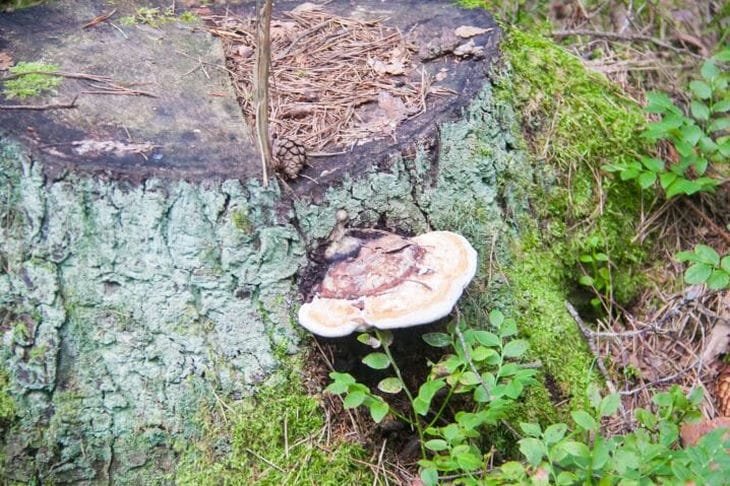When developing a new site or carrying out large-scale landscaping work, many owners strive to get rid of stumps left after cutting down trees as quickly as possible.
Indeed, the easiest way is to order special equipment that will complete the task in a matter of hours.
However, this method has a significant disadvantage: the wheels of excavators or tractors leave deep ruts, and the top layer of soil is subject to serious damage.

If the area has not yet been improved, this is not critical, but in an improved area such consequences can become a problem.
It is much more difficult to decide on the removal of a stump when it comes to an area with a ready-made design. Here it is important to think: is it really necessary to remove it?
It turns out that wood waste can be of practical use, becoming an element of landscape creativity.
For example, it is easy to create an original flowerbed from a stump. To do this, the core is cleaned out, filled with fertile soil and flowers, herbs or even strawberries are planted.
Another non-standard option is using a stump to grow mushrooms.
It is enough to add oyster mushroom or honey fungus mycelium to the wood, and in a few months you can harvest. The mycelium, growing, gradually destroys the structure of the tree, turning it into dust. This process takes about five years, after which there is no trace left of the stump.
In addition to aesthetics and practicality, preserving stumps can have environmental benefits.
Decaying wood becomes a habitat for insects that participate in the formation of the soil layer.
Over time, the stump turns into a natural fertilizer, enriching the soil with organic matter.
Of course, there are situations when removal is necessary. For example, if the stump is affected by diseases that threaten other plants, or interferes with the installation of communications.
But before you grab an axe or call in equipment, it's worth assessing the potential of an old tree. Not all stumps are enemies of the landscape. Sometimes they become its highlight.
